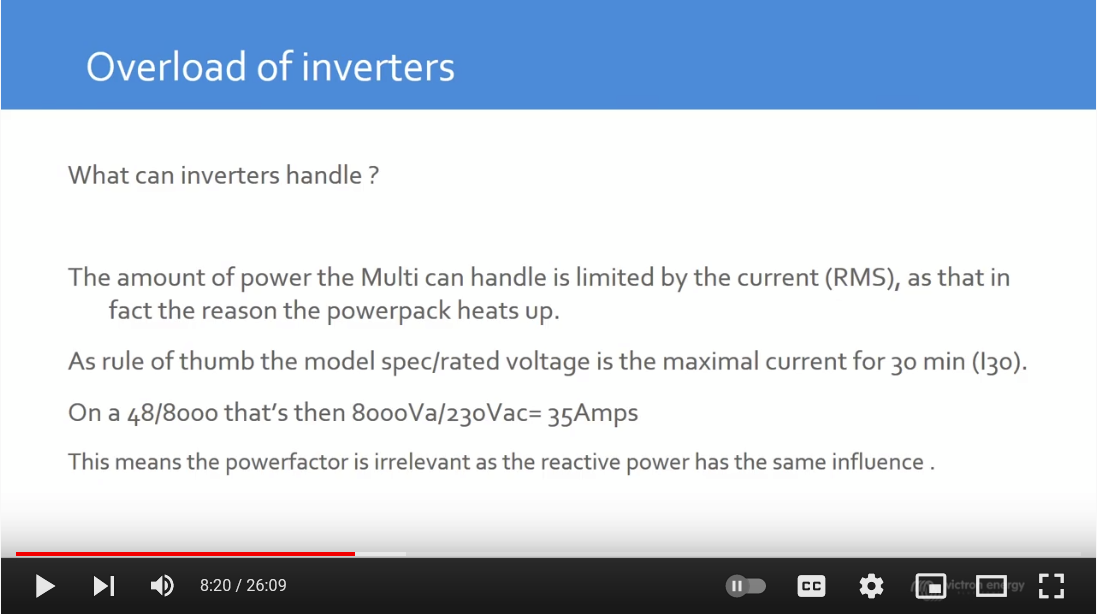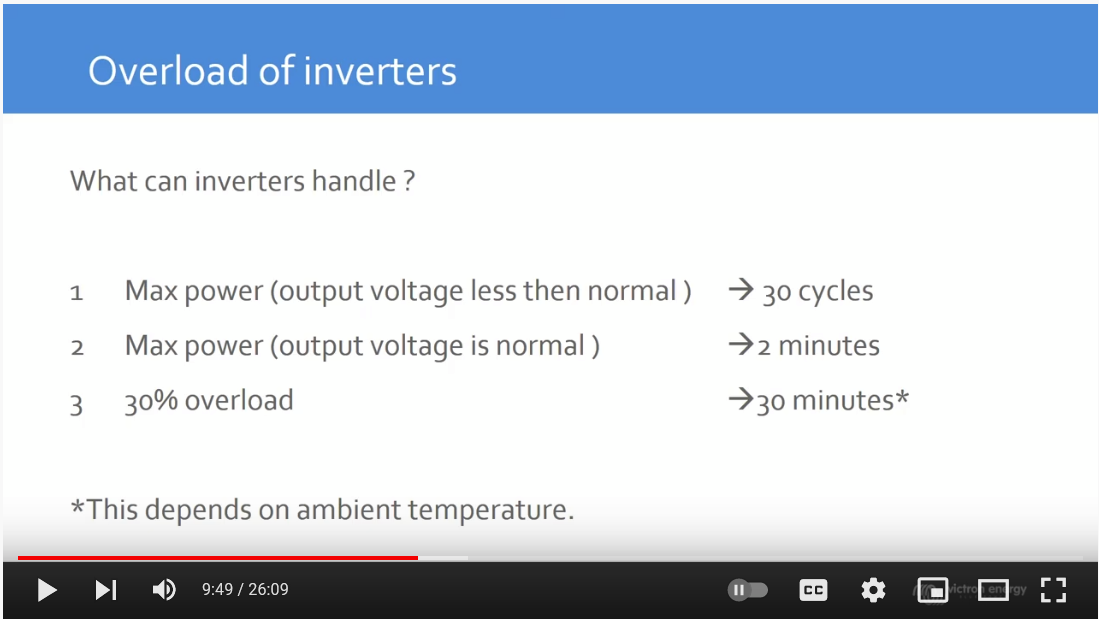After watching Diagnosing Inverter Overload - by Johannes Boonstra, I need some clarity on overload situations with ESS when in Grid Connected state. I suspect the YouTube is directed more at Multiplus II in Inverter only mode.
At 8:20 Johannes shows this slide:

The significant part for me is the 'rule of thumb the model spec/rated voltage is the maximal current for 30 min'. Reasoning is inverter heats up and power factor is irrelevant - it is based on Amps.
The Datasheet for Multiplus II does not mention this 30 minute limitation but that is Ok - I guess there has to be some limit but the datasheet should not say Cont. Output Power.
At 9:49 Johannes shows this slide:

Here is another mention of the 30 minutes limitation but this time associated with '30% Overload'.
Q1. What is the 30% overload base figure? Is it the 8000VA (35A) mentioned in the first slide which suggests the 30% overload value is 8000VA x 1.3 = 10,400VA (seems unlikely) or is it the other Cont. Output Power of 6400W (28A) mentioned in the datasheet which suggests the 30% overload value is 6400 x 1.3 = 8,320W (seems more likely).
Q2. If the latter, does that mean the Multiplus II 48/8000 is in an Overload state at anything above 6,400W (28A)?
Q3. In an ESS installation with Grid connected, at what point of inverter demand (28A or 35A) is the excess demand supplied from the grid? (Let's assume more than adequate battery capacity & current carrying capability.) It is possible that the answer is both and the Multiplus II adjusts based on temperature of the inverter.
Q4. With regard to Max Power (Peak Power in datasheet?) in an ESS installation with a very stable Grid connected, is the 'Output Voltage less than normal' mentioned in the second slide ever likely to eventuate? Does 'normal' is this context mean the limits that are associated with the Grid Code selected and the associated protection trip settings?
Am trying to understand how ESS works in what may appear to be extreme situations but the answers also explain normal working operation and helps with sizing an ESS system.
